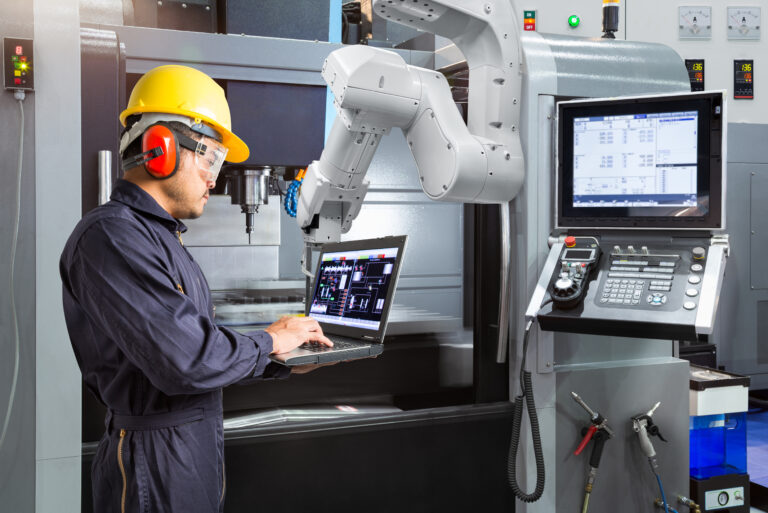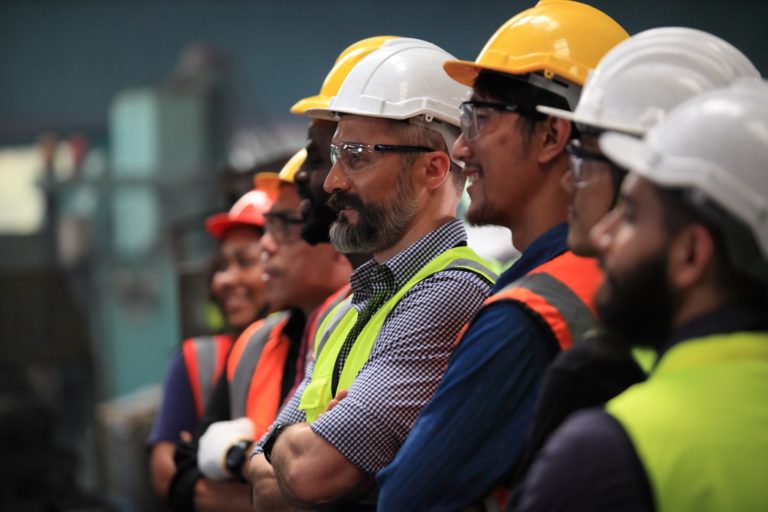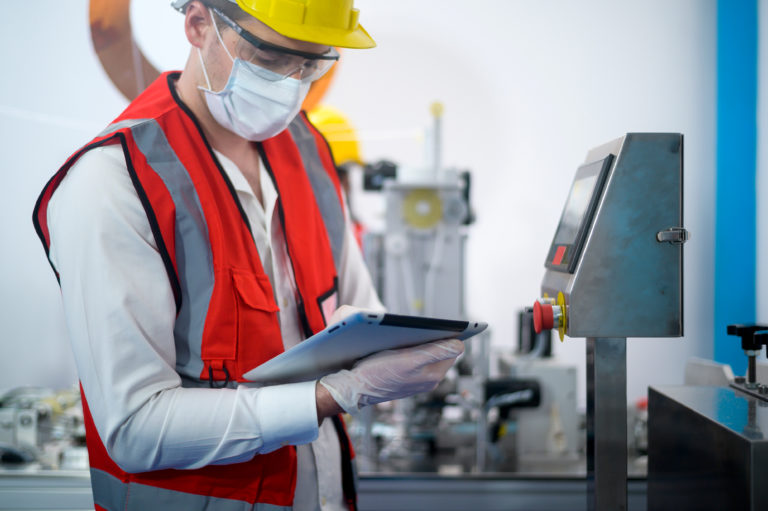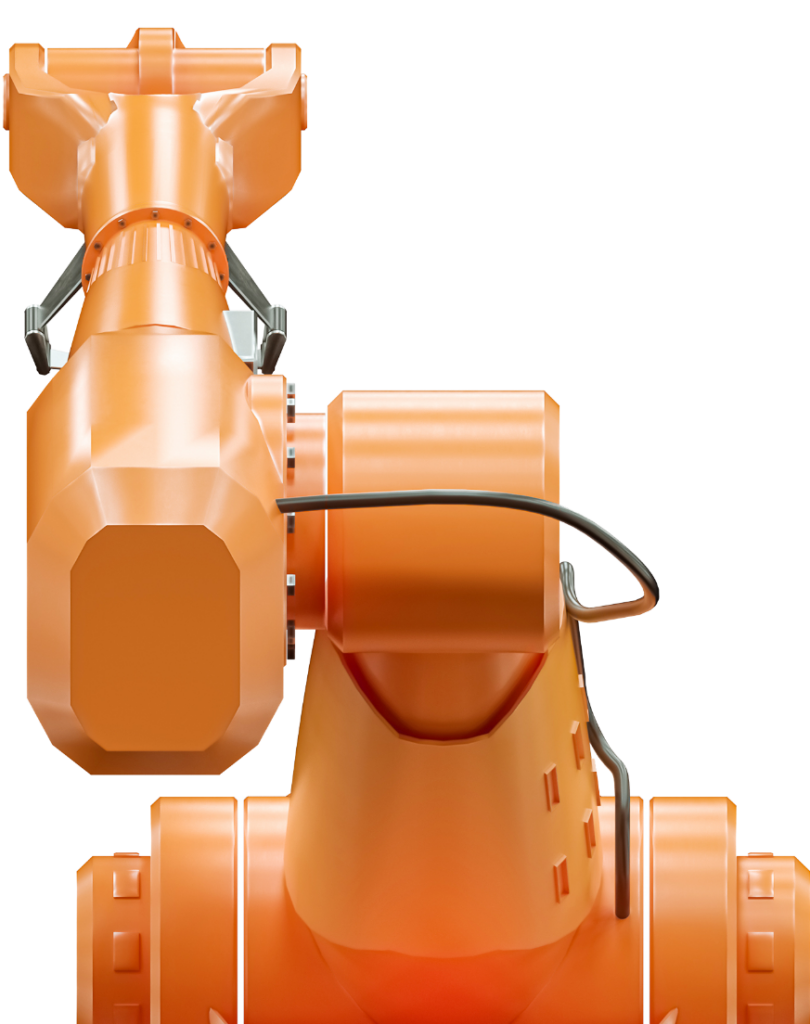Electric resistance welding, commonly called spot welding, is an excellent candidate for automation and robotics. It’s common in automotive and vehicle assembly for frames and body components, where the average vehicle can contain thousands of welds.
As automation and robotic technology continue to evolve, spot welding can be done in ever-smaller physical spaces, integrated with other parts of the assembly process, and in proximity to human operators. The result is consistent, repeatable welding output in less time and with high levels of quality.
Spot Welding System Features
Robot spot welding systems have several considerations and features that come into play:
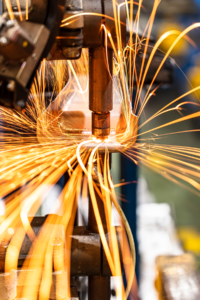
- Arm reach. The robot’s arm must be able to present the weld gun to each position needed for welding.
- Spot welding guns weigh well over 100 pounds, so the arm must be able to safely support its weight (along with the added weight of cables, hoses, etc.).
- Clamping pressure. A servo-controlled gun uses a motor to open, close, and apply consistent pressure for the electrode clamp. This affects weld quality and the size of the weld nugget as well as limiting distortion around the heat-affected zone (HAZ).
- Articulation and multi-axis motion. Most arms have several joints that can bend and/or rotate to maximize reach and range of motion. Some have up to seven axes of motion, with humans and other equipment nearby.
- Power supply. The power supply sends the predetermined current to the electrodes to heat and melt the pieces and create the weld nugget.
- Timer and speed settings. This determines the duration of electrode clamping to create the precise nugget size needed. Speed settings determine how quickly the arm moves from one spot to the next.
- Fixture design. The fixture must be designed to accurately position the components being welded while allowing access to both sides of the workpiece for electrode contact.
Each of these can be programmed along with the robot’s path of motion for consistent and repeatable welding on each part, enabling a lower cycle time and higher throughput.
The Big Picture: Controls and Integration
Automation brings a degree of repeatability and consistency that even highly-skilled human welders and operators just can’t match. However, they won’t make up for poor preparation: the quality of the components going into a welding station directly impact the quality of the finished part. For example, when parts are assembled into a unit, there is a cumulative effect from the components at the edges of the tolerance range. Even a fraction of an error on each component adds up when it comes together, and can change the dimensions or stability of the final product. Using stamped or machined components can reduce this risk, as does careful quality inspection of hand-prepped materials.
Most fixturing and robotic arms use programmable controls that govern all aspects of system operations. Adjustments can be made to the position and angle of the arm; how and when the arm and individual joints bend, straighten, rotate, raise, lower; how much force is applied and for how long; and the distance between electrodes. Programming factors into the robot’s proximity to other equipment, workpieces, fixturing, or human operators too. For example, operating speed can be varied to ensure safety around humans and delicate parts, safety modes (with reduced speeds) may be triggered automatically in conjunction with signals from sensors or interlocking gates, or automatic shutoff can be programmed if an unexpected object comes in the arm’s path or if a gate is opened.
Another aspect of automation is maximizing machine uptime so that robots are not sitting idle waiting for other operations up or downstream or even within the same weld cell. There are many ways to sequence the steps in a task to limit lag time. This is one of the reasons it’s critical for an integrator to understand the entire production process and not just the welding portion of operations.
One way to maximize uptime is by dividing the welds between multiple robots programmed to work together with coordinated movements. They can accomplish the same number of welds in less time without getting in each other’s way.
Because there are so many variables in the equipment and the technology, there are many options for each application. It can be hard to visualize the arms moving around a workpiece (or how the workpiece can be positioned and moved around a stationary robot). This video from Yaskawa Motoman illustrates just how agile automotive spot welding robots can be when it all comes together.
Experienced integrators know how to work within the available range of motion, reach, and payload, as well as how these affect the stability of the end of arm tooling. The result is a customized welding system that’s safe, efficient, and easy to use. Talk to Force Design to find out more.
